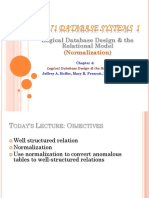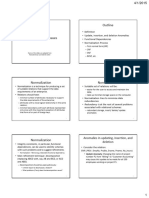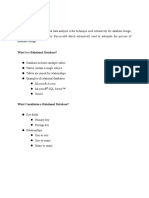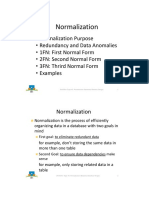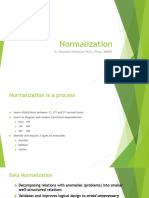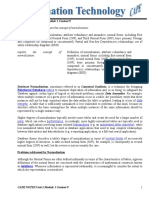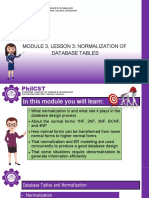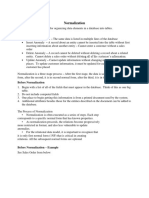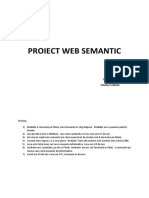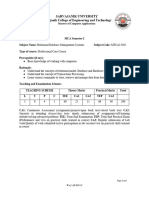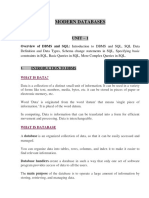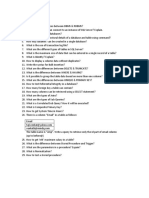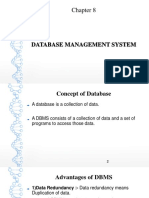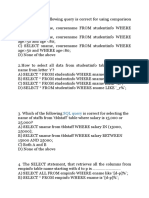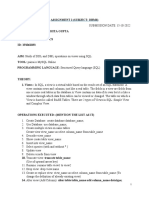0% found this document useful (0 votes)
91 views26 pagesDatabase Normalization
This document discusses database normalization and provides examples to illustrate the process. It explains the concepts of first, second, and third normal forms and how to normalize a table to remove anomalies through decomposing relations and removing partial and transitive dependencies. Steps in normalization include identifying functional dependencies and primary keys to structure relations in a well-formed manner without data redundancy or inconsistencies.
Uploaded by
Lena ManibaCopyright
© © All Rights Reserved
We take content rights seriously. If you suspect this is your content, claim it here.
Available Formats
Download as PDF, TXT or read online on Scribd
0% found this document useful (0 votes)
91 views26 pagesDatabase Normalization
This document discusses database normalization and provides examples to illustrate the process. It explains the concepts of first, second, and third normal forms and how to normalize a table to remove anomalies through decomposing relations and removing partial and transitive dependencies. Steps in normalization include identifying functional dependencies and primary keys to structure relations in a well-formed manner without data redundancy or inconsistencies.
Uploaded by
Lena ManibaCopyright
© © All Rights Reserved
We take content rights seriously. If you suspect this is your content, claim it here.
Available Formats
Download as PDF, TXT or read online on Scribd
/ 26








